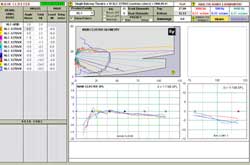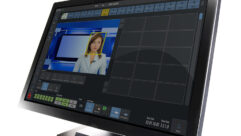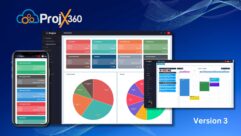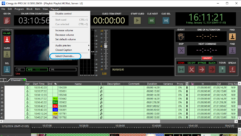

EV Rolls Out Latest Version of LAPS
Electro-Voice has released LAPS v2.2A, the latest version of the company’s line array modeling and design program. The new LAPS is available for free download from the EV website.
Electro-Voice (EV) has released LAPS v2.2A, the latest version of the company’s line array modeling and design program. The new LAPS is available for free download from the EV website.
LAPS is a tool for sound system designers who use EV line array loudspeakers. According to the company, a designer can use LAPS to enter an array design and assess its performance. LAPS is designed to model a full sound system, including main arrays, secondary arrays such as delays and front-fills, and subwoofers.
This latest version of the program includes a special page for predicting coverage of subwoofer arrays, which should result in significant bass coverage and quality improvement at little or not additional cost, says the company.
LAPS supports all EV line array products and related subwoofer models. LAPS v2.2A includes several changes that the company believes improves the LAPS program.
New workbook pages include an Arrays Bass page for predicting horizontal coverage of subwoofer arrays, an Air Loss page for predicting sound attenuation in air over large distances, and a Cable Loss page for modeling the resistive and capacitive effects of loudspeaker cable. The Supported Products page lists all products supported by LAPS v2.2A.
Support was added for the XLC family, XLVC family, X-Line family, and EVA family of EV line array products, while modeling enhancements offer increased maximum main-to-delay distance to 412 feet, more accurate coverage prediction curves to above 6,000 Hz, expanded array equalization predictions to include realistic target frequency response curves, and more usable polar response display for large array tilt angles.
User interface improvements include the ability to insert boxes in the array specifications without re-entering existing ones, venue and array printouts that deal correctly with hidden data, pop-up in-progress message boxes for saving files and generating reports, and optional dropdown lists for entry of box drive level.
EV also says it made rigging enhancements to the LAPS, such as improved rig report formatting and pagination, the inclusion of trim height and rig bottom height on rig reports, improved rig report display of diagnostic messages, improved handling of pullback points for X-Line arrays, warnings if front chain links will collapse on up-tilted X-Line arrays, and relocation of rig top reference point to top front corner of topmost element.
Other upgrades include the ability for multiple versions of LAPS II to coexist on the same machine more easily, updated help system, ability of LAPS to load .EVA files written by EV’s EVADA modeling program, and improved load/save handing of international date formats. (Previously, LAPS would fail to load .LAPS files from foreign countries, according to the company.)
LAPS is a Microsoft Excel-based application that runs in Windows environments. It requires Excel 2000 or later and Microsoft Windows 2000 or later.










